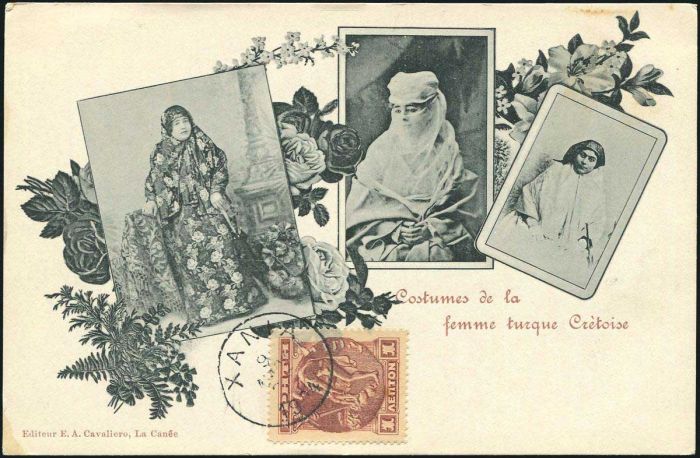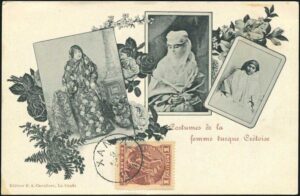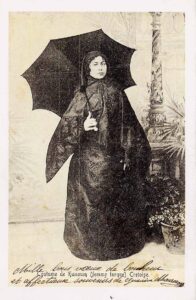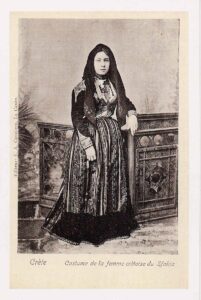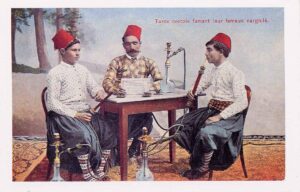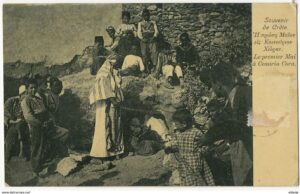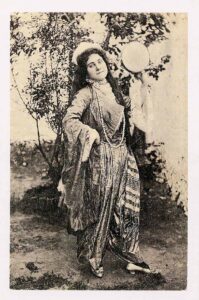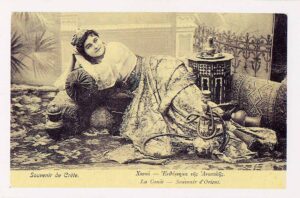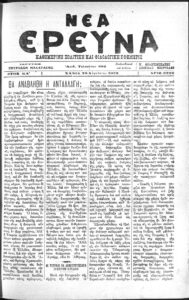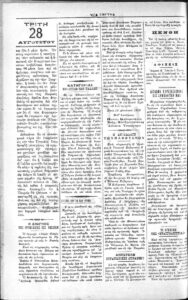The exchange of the Muslim population of Crete
City
Migration Period
Category
Full Description
In August 1923, the Greek Parliament ratified the Population Exchange Agreement, which had been signed in Lausanne in January of the same year. The Agreement stipulated that ‘there must be a mandatory exchange of the Turkish citizens of Christian Orthodox faith who reside in Turkish territories and the Greek citizens of Muslim faith who reside in Greek territories’. In the case of Crete, this resulted in the forced departure of a large portion of the population, since thousands of Cretan Muslims lived on the island.
The Muslim element was a vital part of Cretan culture when the island was under Ottoman rule. The co-existence of Christians and Muslims had been achieved gradually through Islamisation and intermarriage, while Turkish settlers had been rare. During the turbulent 19th century, especially from the Greek Revolution of 1821 onwards, conflicts between Christian and Muslims were constantly on the rise. The Christian uprisings in Crete led to the emergence of the ‘Cretan question’, which was part of the wider ‘Eastern question’. In 1898, Crete became independent and the Cretan State was established, a statelet which existed for about 15 years until the island was united with Greece in 1913.
During the unrest of these decades, political developments had often triggered migration waves of Cretan Muslims leaving the island. Over the 19th century, the Muslims of Crete commonly experienced threats against their lives and livelihoods, the destruction of their houses, crops, and properties and the burning of entire neighbourhoods. Given that the political demands of the Christian population steadily gained ground over this time, large parts of the Muslim population fled the island whenever tensions flared.
In the years before and after the establishment of the Cretan state, the Muslim migration wave away from Crete reached its peak. Between 1881 and 1900, the Muslim population of Crete had decreased by half according to the censuses of the time. The effects of this population movement were more noticeable in the countryside, where Muslim populations shrunk both due to external and internal migration, as more and more Muslims fled to the cities. These departure waves continued throughout the existence of the Cretan State, triggered by the Therisos Revolt, the emergence of the Young Turks and the anticipated union with Greece.
Nevertheless, Crete was still characterised by the co-existence of various religious groups, as attested by the island’s photographic representations during the first two decades of the 20th century. During this time, there were both Greek and foreign photographers creating postcards of Crete. To discover images and themes that would capture the attention of publishers, they took a wide range of photographs and it is thanks to them that many visual representations of Crete before the population exchange still survive today.
In the postcards that were created before 1910, we can see that Cretan Christians and Muslims were very similar in appearance. The four postcards presented here depict Christian and Muslim Cretan women. Their religious identity is either stated in the caption or indicated by a religious symbol, but there are no major differences in their appearance. Differences in attire might be more prominent when comparing traditional versus more ‘European’ outfits, but the clothes worn by the depicted women do not clearly signify their religion.
These postcards were mostly published by French and German houses who were interested in printing representations of an ‘oriental East’ and Chania was depicted accordingly. Indicatively, the next postcards included in this entry depict three young men enjoying their hookah and two young women whose poses were meant to evoke the ‘corrupt morality of the East’, as Said calls it.
Ten years before the Population Exchange Agreement, the Muslim element was still strong in Crete. It was the second largest religious group in size and various statistics from the beginnings of the 1920s estimated that there were between 19,000 and 25,000 Muslims on the island, with 75% of them living in the cities. After the signing of the Agreement, almost the entirety of this population had to prepare for an orderly departure.
At the end of August, the newspaper Nea Erevna announced that the governments were preparing for the population exchange, underlining that ‘Muslims are prohibited from leaving Greece and selling their immobile assets before the population exchange agreement is implemented. Henceforth, those Muslims who wish to leave the country must declare their intention to the embassy authorities of Spain and Holland and ask for the Government of Ankara to declare to the Greek government that it accepts their transport to Turkey’. Most of the Cretan Muslim population left the island within the following year.
Bibliography
Yannis Glavinas, Muslim populations in Greece (1912-1923), postdoctoral thesis, Aristotle University of Thessaloniki, Thessaloniki 2008.
Nikos Andriotis, ‘Christians and Muslims in Crete 1821-1924. A century of constant conflict on and off the battlefield’, Mnimon, no. 26 (2004), pp. 63-94.
Christos Machairidis (ed.), Crete and Cretan Turks, Ereisma, Chania 2014.
Michalis Papadakis (Dandolos), ‘The publishers of postcards of Crete until 1913’, Rethymniotika Nea, 10/11/2017.
Edward W. Said, Orientalism, Penguin Classics, 2003.
